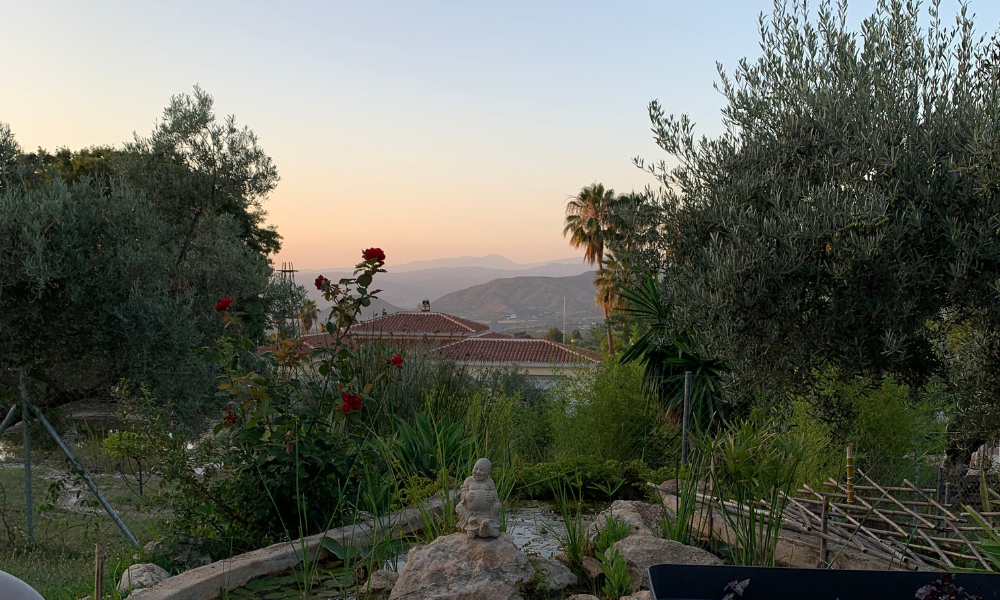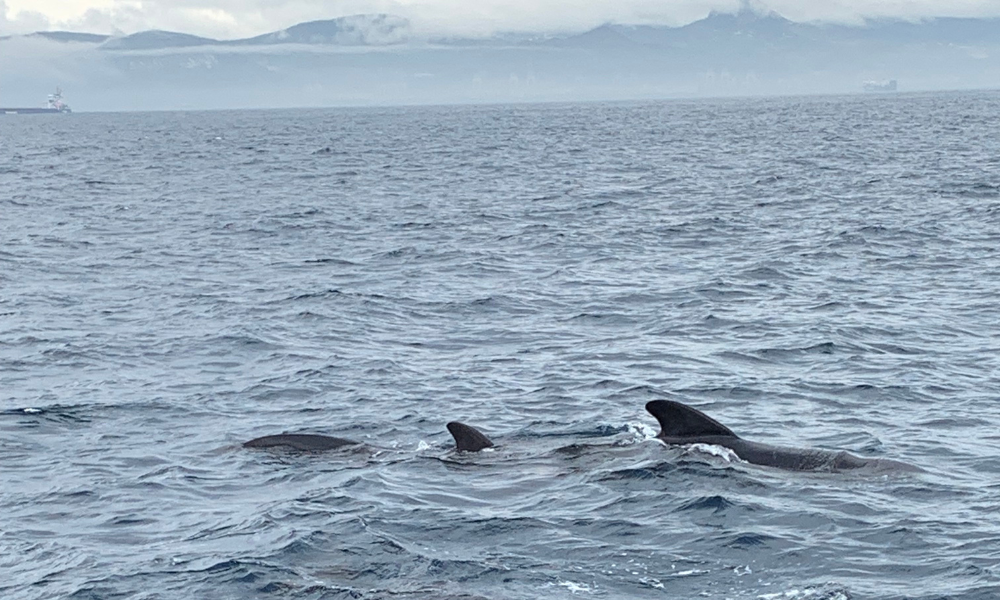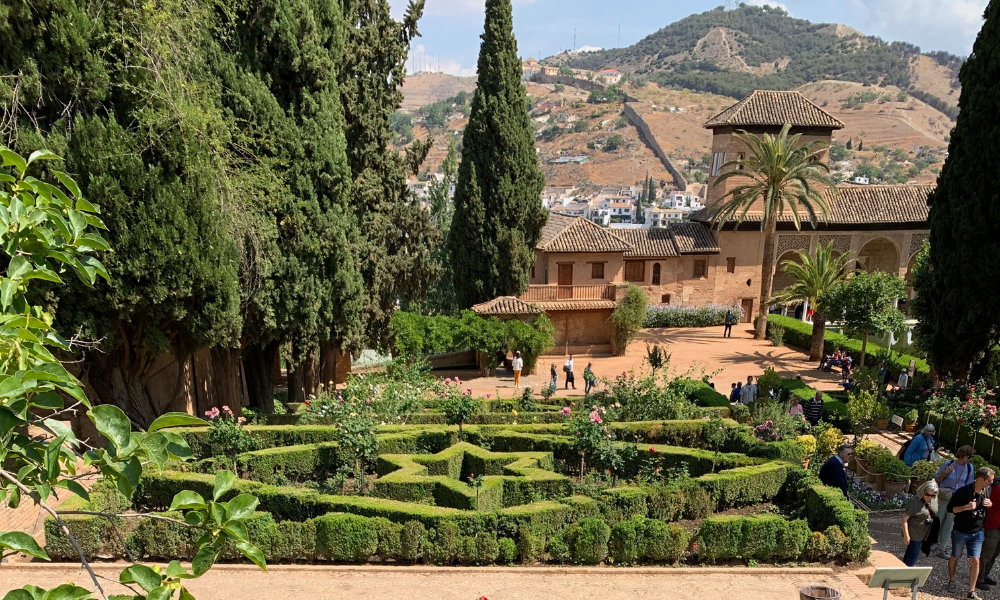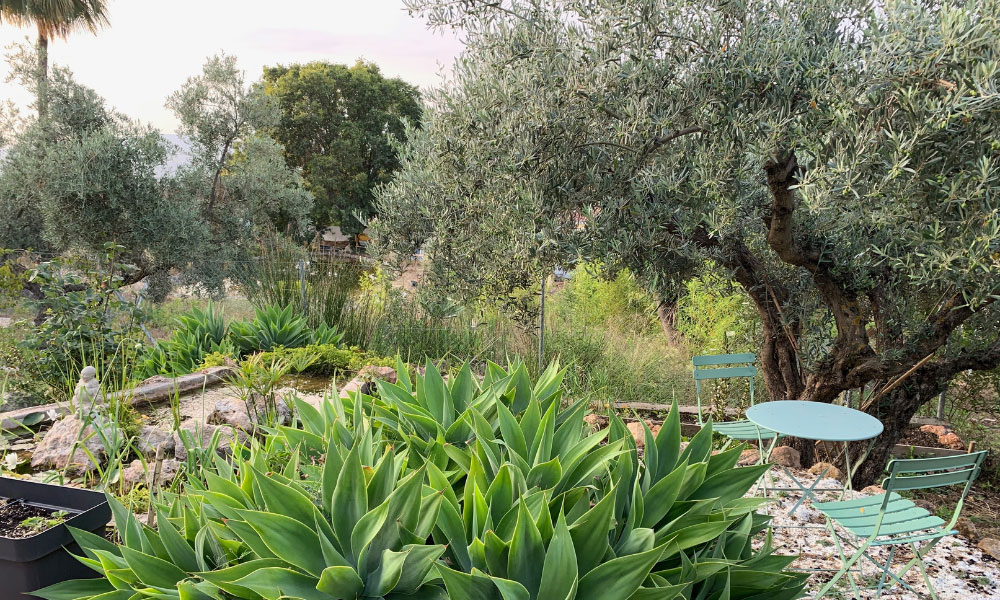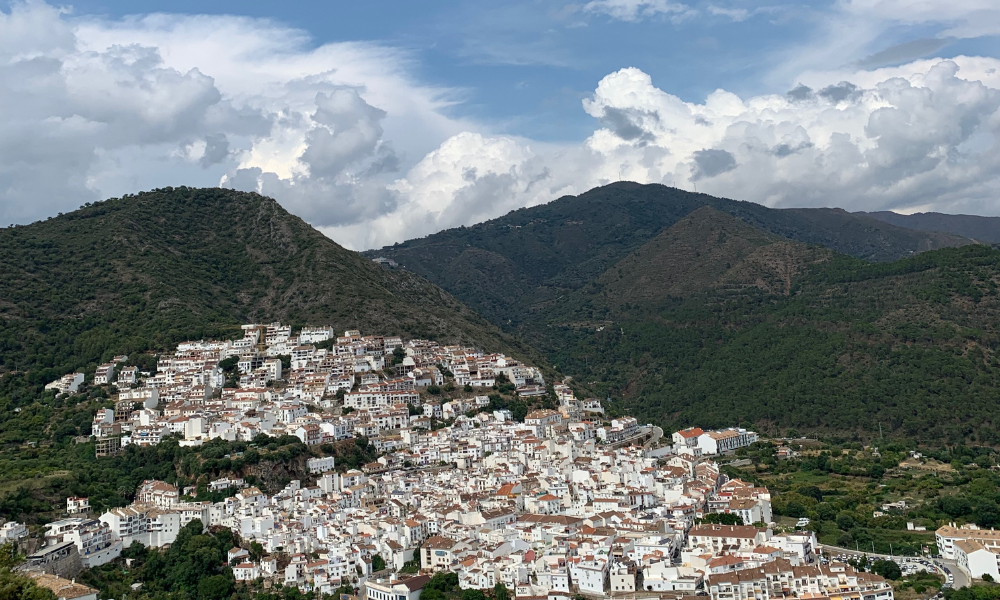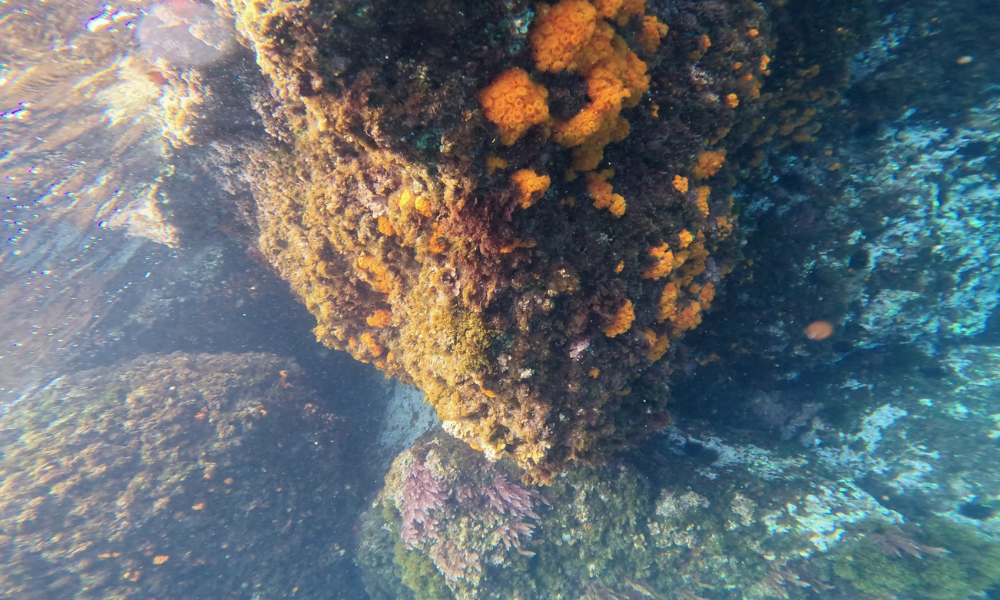
"I love the process of investigation — whether it's related to the cultural history of an area or the science of the ecologies I explore in that space," shared School of Art, Design, and Art History (SADAH) professor of Art Lisa Tubach. She recently attended Bajo el Olivo: International Creative Arts Residency, located just outside of Alhaurín el Grande in the Andalusia Region of Spain, where she made artwork based on the area's influences.
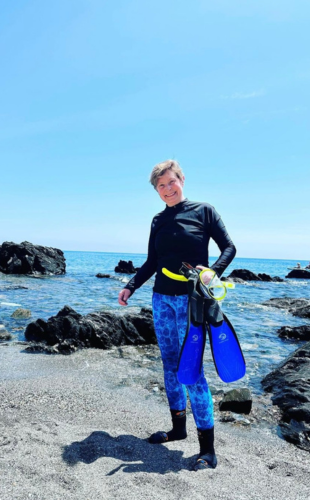
"My art practice is centered upon imagery based on the natural world, with a dedication to the aquatic biome. I am fascinated with the tension between the benthic zone and the surface, a space in constant motion," shared Tubach of her artwork. Tubach's work also involves a passion for conservation efforts, so Tubach has traveled to bodies of water worldwide for research and artmaking.
Artist residencies are often competitive, so Tubach submitted a proposal detailing her desire "to document the area, both in terms of underwater imagery and cultural experience — to bring together [her] interest in marine ecology with the cultural context of the landscape." This proposal was a success, and she was selected to participate in the immersive experience from May 25 through June 29, 2023.
Before the residency dates, Tubach conducted research, documenting the underwater conditions of the Alboran Sea, snorkeling along the Costa del Sol, and whale watching in Tarifa. Tubach's goals for the residency focussed on her current creative interests. Recently, she has been particularly interested in "the connectivity between marine and terrestrial ecologies, as well as other key dichotomies — such as health versus illness, macro versus micro, geological versus biological."
After her preliminary research, Tubach developed a plan for the month-long experience. "An important next step for me was to expand the visual language to coalesce marine imagery with cultural contexts of the region."
Spain's landscape and ecology allowed for inspiration during the residency. "There were lemon trees, rosemary bushes the size of small trees, and enormous queen-of-the-night cacti," shared Tubach. In addition to Spain's lush landscape are the majestic bodies of water. "I learned about new species of soft corals and anemones, which I saw first-hand; I also had the opportunity to see an octopus in the wild, which was absolutely thrilling." Spain's surprisingly snow-capped mountains and villages known as Pueblos Blancos were also landmarks of the Alhambra, which Tubach remembers fondly.
At the culmination of her residency, Tubach had garnered new experiences and created artwork. "I created a body of small paintings on paper that brought together these influences of the Andalusia Region." shares Tubach. She then had to transport these completed works from Spain to Virginia, "Getting one's work back to the US is also a tricky endeavor, but not impossible, of course. It can force you to work on a smaller scale."
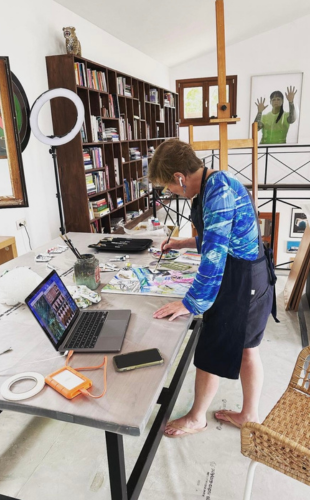
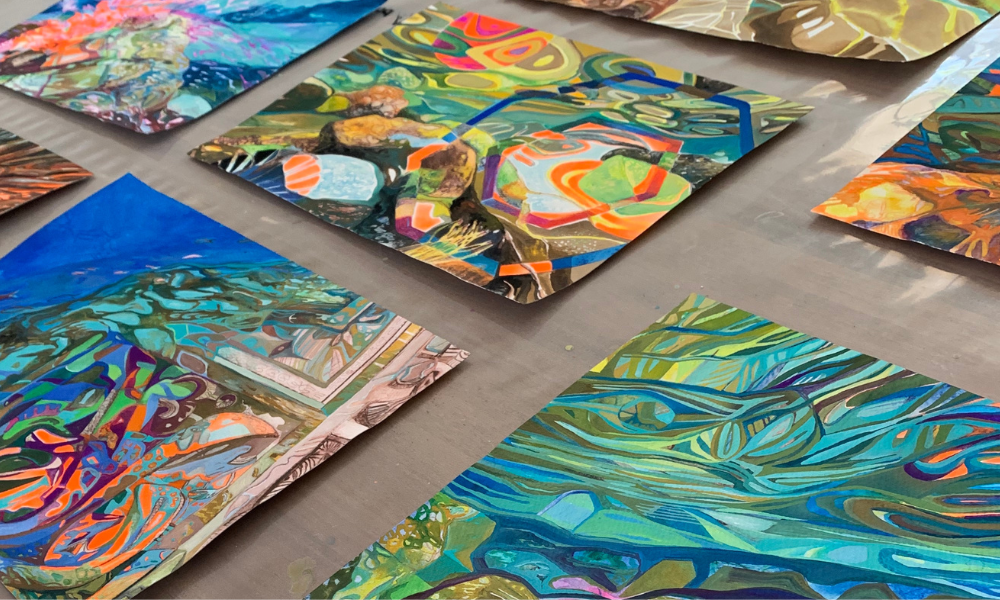
Several of her pieces created in Spain are now in exhibitions in the United States. Tubach's piece, Benalmádena #3 (Near Nocturne), was selected for the First Street Gallery's 2023 National Juried Exhibition in New York City from July 28 to August 26, 2023. She also has work in the current exhibition Intricate Oceans: Coral in Contemporary Art at the Coastal Discovery Museum in Hilton Head Island, South Carolina.
In addition to this travel and work as a professional artist, Tubach also teaches Foundations courses in SADAH. She shares that opportunities like residencies are crucial for artists in teaching due to the time to research and work in the studio. "I love artist residencies — the focus in the studio, in addition to the infusion of new experiences and people." She adds that studio time is crucial "because it's the making of art that brought me to JMU in the first place; it's what inspires passionate teaching." Tubach hopes to continue her research and create more work in Morocco or even the Coral Triangle, comprised of Indonesia, Bali, and the Solomon Islands.
Photographs of Tubach snorkeling and working in her studio courtesy of Bajo el Olivo: International Creative Arts Residency, 2023.
All other photos courtesy of Lisa Tubach, 2023.



